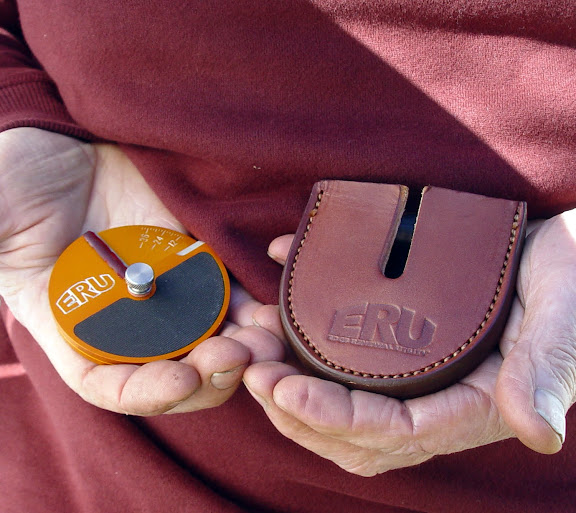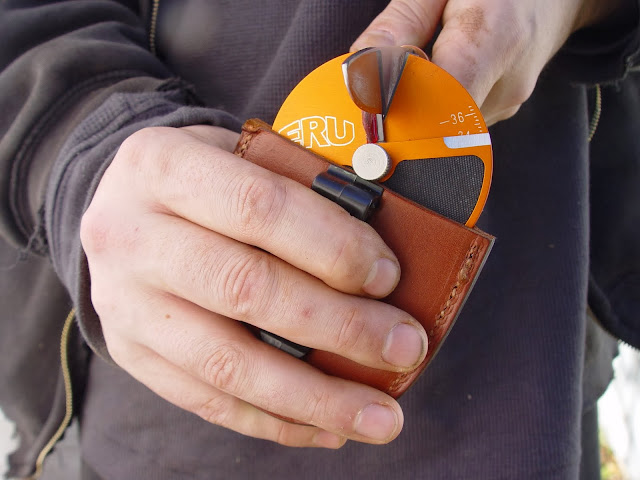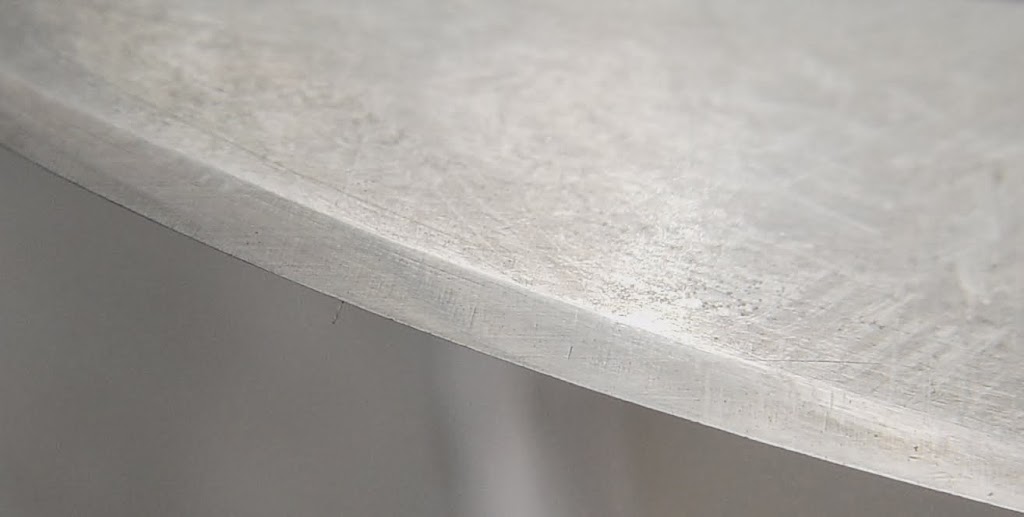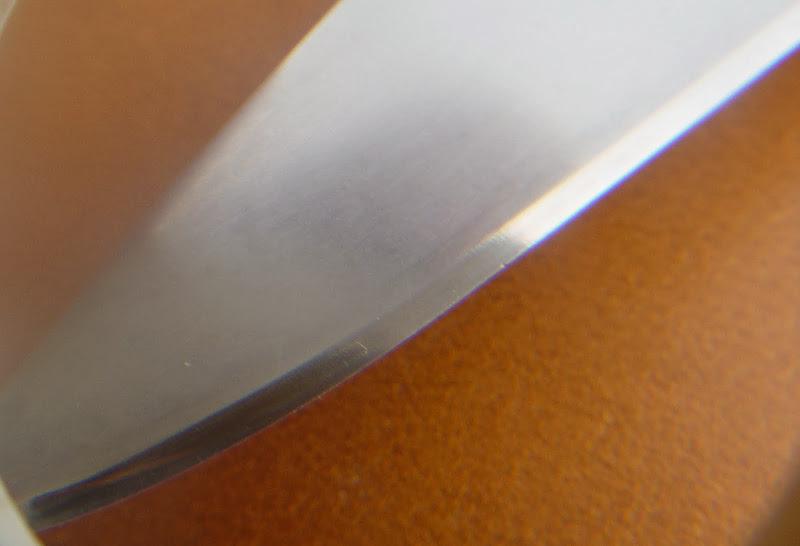What do you say to a handheld adjustable tungsten carbide knife sharpener that can be set to sharpen every thing from a straight razor to an ax?
It is adjustable from 16 degrees inclusive to 40 degrees inclusive or any degree setting in between. This anodized aluminum sharpener is cnc machined with sharpening angles that are 100% accurate. The carbide faces of C2 carbide are 95 Rockwell "A" and are precisely set in the aluminum housing.
This is the perfect sharpener for scandi ground blades with no secondary edge bevel. The carbides can be set so the bevels match the carbide surfaces resulting in a truly sharp scandi grind.




The ERU was designed to be carried when you go hunting or fishing, trapping or camping, a true field sharpener. It can be set to sharpen most any blade you carry into the field.
The leather sheath/holder was made using Wicket & Craig top grade leather.
The sharpener is made to be used, held in its holder to protect your fingers.

An example of an edge done with the ERU. This blade is a forged 1084 that I made and carry every day. Its only seen the ERU for a year and a half. If done with good technique this carbide "V" sharpener will keep a great working edge on most all your knives. This is a 24 degree edge with a 28 degree micro bevel. The micro can be seen in the middle of the bottom pic.



The ERU can be clipped to your belt or is small enough to be carried easily in your pocket.
Its called Edge Renewal Utility or ERU a truly versatile adjustable knife sharpener.
The ERU is 75.00 shipped conus. No export sales at this moment.
Paypal fred.rowe@bethelridgeforge.com
People that grind using the Bubble Jig will find the ERU a great addition to your sharpening. You can come right of the grinder belt with a specific set angle and go right to the ERU set at the same exact angle to strip the wire edge and finish the edge with a perfect micro-bevel.
Regards, Fred
It is adjustable from 16 degrees inclusive to 40 degrees inclusive or any degree setting in between. This anodized aluminum sharpener is cnc machined with sharpening angles that are 100% accurate. The carbide faces of C2 carbide are 95 Rockwell "A" and are precisely set in the aluminum housing.
This is the perfect sharpener for scandi ground blades with no secondary edge bevel. The carbides can be set so the bevels match the carbide surfaces resulting in a truly sharp scandi grind.


The ERU was designed to be carried when you go hunting or fishing, trapping or camping, a true field sharpener. It can be set to sharpen most any blade you carry into the field.
The leather sheath/holder was made using Wicket & Craig top grade leather.
The sharpener is made to be used, held in its holder to protect your fingers.
An example of an edge done with the ERU. This blade is a forged 1084 that I made and carry every day. Its only seen the ERU for a year and a half. If done with good technique this carbide "V" sharpener will keep a great working edge on most all your knives. This is a 24 degree edge with a 28 degree micro bevel. The micro can be seen in the middle of the bottom pic.
The ERU can be clipped to your belt or is small enough to be carried easily in your pocket.
Its called Edge Renewal Utility or ERU a truly versatile adjustable knife sharpener.
The ERU is 75.00 shipped conus. No export sales at this moment.
Paypal fred.rowe@bethelridgeforge.com
People that grind using the Bubble Jig will find the ERU a great addition to your sharpening. You can come right of the grinder belt with a specific set angle and go right to the ERU set at the same exact angle to strip the wire edge and finish the edge with a perfect micro-bevel.
Regards, Fred
Last edited:
